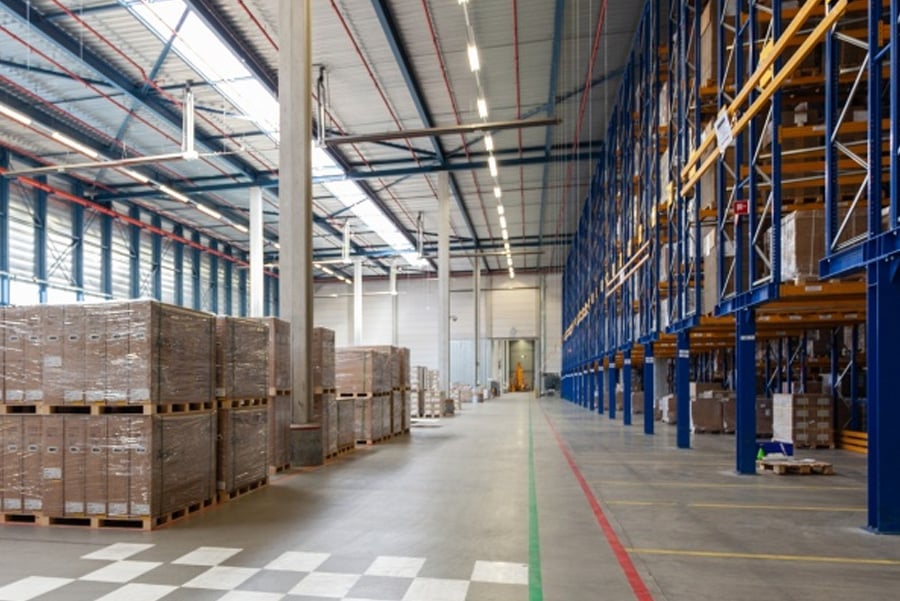
Discover tips to optimize Dock to Stock, an indicator that measures the time elapsed between dock receipt and stock availability.
The world has undergone a recent change. With the pandemic, we have observed a series of adaptations in the routine of society, including new ways of working and consuming. Faced with this scenario, companies had to keep up, sometimes adapting their niche to the new market, sometimes aligning their demand with the new reality.
The online market grew significantly during this period of great transformation. According to the study highlighted by Ebit/Nielsen, in 2020 e-commerce sales in Brazil gained more than 13 million new consumers, with a growth of 29% compared to the previous year.
This increase had direct repercussions on logistics and company performance, which had to quickly adapt to the high and recurring demand. In a world where consumption speed, delivery agility, and customer satisfaction are correlated, maintaining good logistical stock planning, from dock to warehouse, ensures competitiveness in the market. In this way, Dock To Stock becomes the key to sales success and company profitability.
But in the end, what is Dock To Stock?
In general, Dock To Stock is the name that identifies the transport of a product from the receiving area to the stock. This process starts at the dock, goes through several crucial stages for the proper functioning of the logistics center, such as inventory control, and ends after the product has been stored and accounted for. In logistics management, Dock To Stock is conceived as an indicator that measures the time taken in this movement.
Even though this path seems relatively simple, there are several nuances and small details that might not work at every stage and delay the Dock To Stock flow.
According to recent studies highlighted by the American Productivity & Quality Center (APQC), there are companies that take up to 48 hours to complete the Dock To Stock process, while others that are well managed complete the process in less than 5 hours. This difference shows that some companies can make progress in optimizing and simplifying internal processes, saving time and financial resources.
With this in mind, we have separated 4 steps to improve performance between your company’s dock and stock. By applying them to your team’s flow, you will surely achieve excellent results! Look:
Optimize Dock to Stock Time
How does employee movement occur during the Dock to Stock process? This is the first issue to analyze when it comes to reducing flow times. Employees who need to constantly move from one place to another to seek information, interact with sectors, and perform various activities can slow down the process, meaning operations are interrupted. To improve employee traffic and reduce process times, your company can:
- Improve the layout of the physical space. Redesign the warehouse by prioritizing light and heavy load categories. Provide carts and/or conveyors for greater transport flexibility.
- Invest in electronic devices such as computers and mobile devices, as well as control software, to reduce the time needed to manually record processed information. An example is the use of RF collectors integrated into the WMS system.
- Assign specific roles and have at least one person at every level of the operation, so it is possible to discover and highlight where changes are needed at each stage.
If you use cross-docking, keep it regulated.
Keeping cross-docking configured means avoiding the labor involved in handling a product with backorders. For this distribution system, which does not require warehouse storage, to work well, it is necessary to establish direct contact with the receiving team. If well applied, cross-docking ensures speed in order fulfillment and delivery.
Define and Apply Compliance Policies with Your Suppliers
Companies are always exposed to risks with suppliers, therefore, ensuring the application of effective compliance policies guarantees cost reduction, avoids potential illicit and reputational issues, and accelerates the receipt of goods. Some of the negotiable topics to ensure a good stock flow are:
- Designate carriers: have autonomy in choosing the companies that handle goods, to avoid problems with transportation, unnecessary expenses, and missed deadlines.
- Standardize process formats: negotiate with suppliers who adapt labels, shipments, documents, among other elements to the Dock To Stock flow that facilitates communication between employees and outsourced workers.
Implement WMS and Automate Your Dock To Stock
WMS is a warehouse management system that facilitates stock logistics in industries, operators, wholesalers, retailers, and e-commerce. It allows the automation of DC processes and ensures the best use of resources (people, equipment, and area).
When it comes to agility in Dock To Stock, WMS is a great ally because it brings much more speed to the receiving process. The system assists in control and automatically determines the address of each product in the storage area. And with a detail: the system always works to reduce movements and find the best position for each package. With the help of the software, you will be able to apply greater efficiency in receiving items and their allocation, with a direct impact on Dock To Stock.
In the case of Deagor WMS, the system coordinates activities, offering real-time operational information, allowing extended viewing of panels and notifications, which allow identifying failures in time to avoid them, as well as making the right decisions for the growth of your business. In other words, if a delay is identified at receipt, you will be able to correct it before it affects your performance in Dock To Stock.
Just as we have witnessed great changes in the way of consuming, it is necessary to keep your company increasingly updated and integrated with market technologies every day. The world has changed, and we at Deagor can help you change along with it. Discover our solutions and stay updated on market technological innovations.














